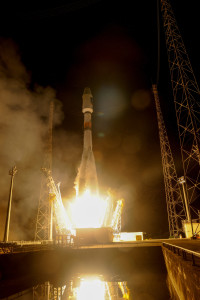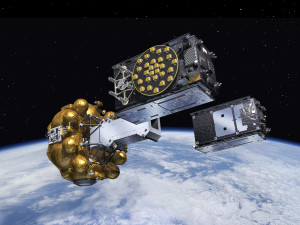
All the Soyuz stages performed as planned, with the Fregat upper stage releasing the satellites into their target orbit close to 23 500 km altitude, around 3 hours and 48 minutes after liftoff.
“The deployment of Europe’s Galileo system is rapidly gathering pace” said Jan Woerner, Director General of ESA. “By steadily boosting the number of satellites in space, together with new stations on the ground across the world, Galileo will soon have a global reach. The day of Galileo’s full operational capability is approaching. It will be a great day for Europe.”
Two further Galileo satellites are still scheduled for launch by end of this year (17 December). These satellites have completed testing at ESA’s ESTEC technical centre in Noordwijk, the Netherlands, with the next two satellites also undergoing their own test campaigns.
More Galileo satellites are being manufactured by OHB in Bremen, Germany, with navigation payloads coming from Surrey Satellite Technology Ltd in the UK, in turn utilising elements sourced from all across Europe.
“Production of the satellites has attained a regular rhythm,” said Didier Faivre, ESA’s Director of Galileo and Navigation-related Activities. “At the same time, all Galileo testing performed up to now (including that of the ground segment) has been returning extremely positive results. And while the continuing deployment of Galileo remains our priority, along with exploitation of EGNOS (Europe’s already operational satellite navigation augmentation system) ESA is also looking farther ahead.”
“With the European Commission, we are doing the technical work to ensure Galileo goes on ‘forever’, locking in continuity of Europe’s navigation services into the long term, to meet performance on a par with the other global satellite navigation systems.”
Next year the deployment of the Galileo system will be boosted by the entry into operation of a specially customised Ariane 5 launcher that can double, from two to four, the number of satellites that can be inserted into orbit with a single launch.

